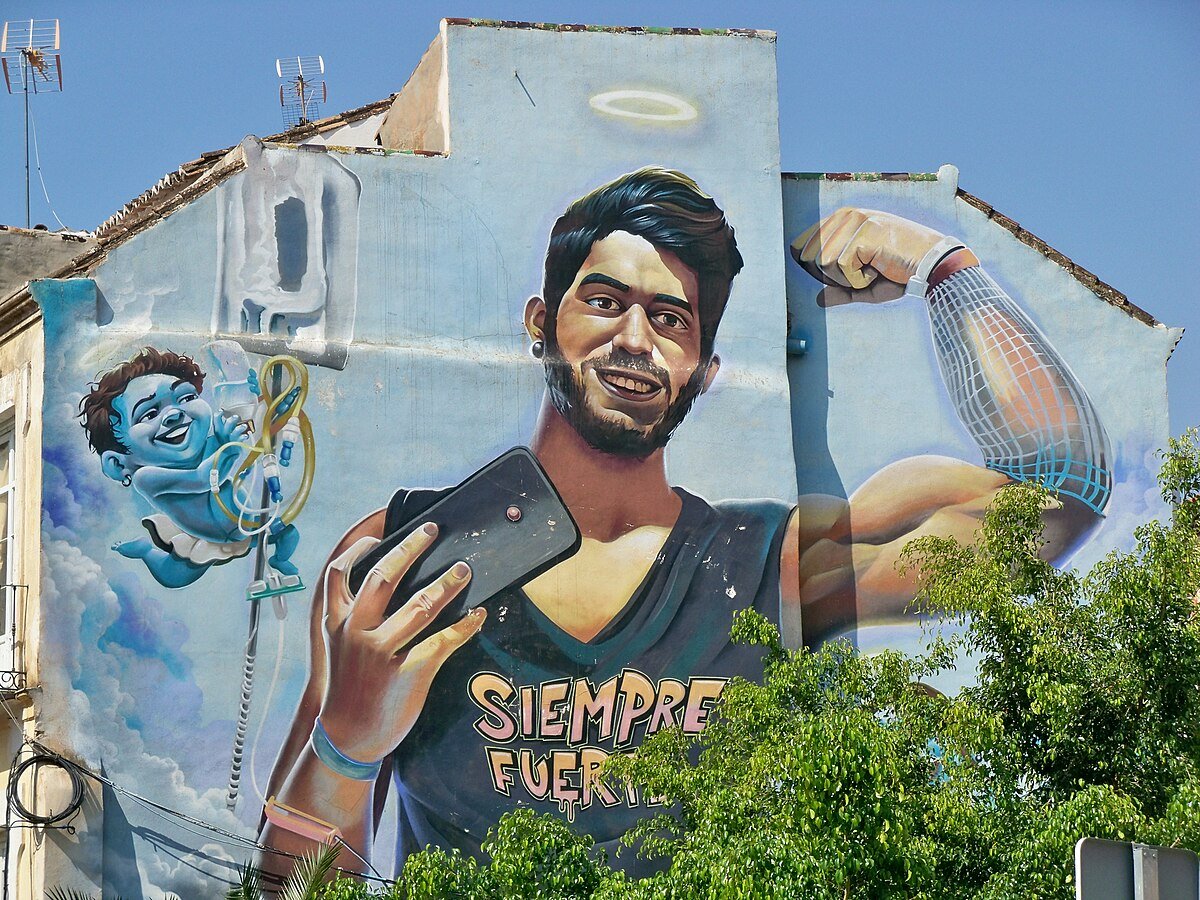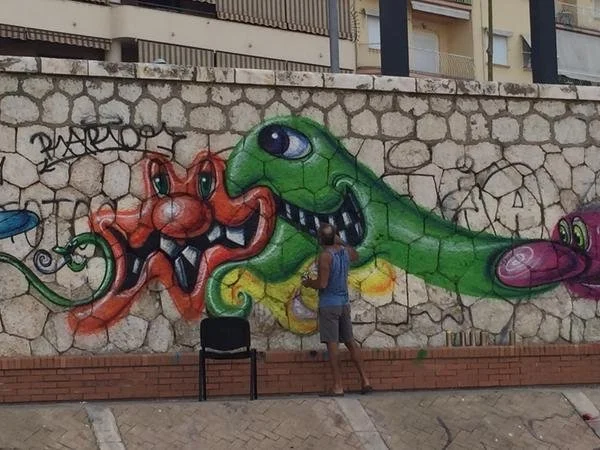Málaga & Street Art
Public Art Beyond Soho: Málaga’s Murals and Urban Transformation
When most people think of Málaga street art, their minds leap to the Soho district, where large, curated murals draw tourists and art lovers alike. But Málaga’s creative pulse extends far beyond that well-trodden route. In neighborhoods that don’t always make it into guidebooks, grassroots artists and community programs are transforming walls into stories, and forgotten spaces into vibrant expressions of identity.
Málaga’s Urban Transformation: A Brief Context
Málaga has reinvented itself over the past decades. Once a largely industrial port city, it’s become a cultural hub — thanks in part to initiatives like MAUS (Málaga Arte Urbano Soho). But the urban-art story doesn’t end in Soho: recent municipal efforts aim to spread street art across the city in more inclusive, socially grounded ways.
Image courtesy of Obey Giant website.
One such effort is the Málaga Más Bella (website in Spanish) or in English, the More Beautiful Málaga program, driven by the municipal Participation Citizens area in partnership with associations like Kartio and Arrabal AID. Its mission? To beautify public spaces — especially neglected walls — through participatory murals and graffiti, while engaging local communities in the process.
Emerging Street Art Zones (Beyond Soho)
Let’s explore some of the lesser-known pockets of street art in Málaga — areas where creativity meets community, and walls become a canvas for transformation.
Lagunillas (Cruz Verde)
Lagunillas is a working-class neighborhood with deep roots and a long history of being overlooked. Yet today, it’s emerging as a street-art powerhouse — not because it’s curated for tourists, but because it’s authentic.
Artists such as Doger, Lalone, Tenis, Wasabi, and Imon Boy contribute to the rich visual tapestry here.
Image courtesy of Daniel Capilla. You can find it here on Wikimedia.
A particularly moving piece is Lalone’s memorial mural to Pablo Ráez, painted in a self-managed lot (“solar vecinal”) with the message “Siempre fuerte”. This work isn’t just street art — it’s a form of community memory and solidarity.
Check out Lalone’s instagram.
Guadalmedina River Banks
The Guadalmedina River, largely dry through the city core, acts as a subtle but powerful canvas. Its embankments house large, experimental murals: abstract forms, feminist messages, evocative calligraphy — a less polished but deeply resonant open-air gallery.
Kenny Scharf
Image courtesy of Kenny Scharf’s website.
Walking along the river walls feels like exploring an underground urban gallery. The art is raw, immersive, and deeply connected to the city’s geography and social fabric.
Industrial West / Tabacalera Area
On the western side of Málaga, near the old Tabacalera tobacco factory and other industrial zones, huge walls and forgotten buildings provide ideal canvases for large-scale interventions. These spaces are being reclaimed by street artists through pop-up projects and institutional collaborations, giving new life to industrial ruins and pushing artistic boundaries.
Notable Large-Scale Urban Art Projects
Beyond spontaneous murals, Málaga is investing in structured, high-impact public-art initiatives that serve social as well as aesthetic goals.
Málaga Más Bella Program
The Málaga Más Bella initiative is at the heart of many of these transformations. Some recent highlights:
In Campanillas, a gigantic mural was painted on the façade of CEIP El Tarajal by artist Francisco Peral, together with students.
On the escalinatas Rubinstein & Regaterín, Héctor Hurtado installed two murals measuring 12m and 16m.
A third work, by Javier Dólera, decorates the area in a health centre, in Ciudad Jardín.
What’s notable is that these murals are not just decorative: they’re community-driven. The El Tarajal mural involved the school’s own students; the project is backed by social organizations.
IES Manuel Alcántara Mural
In June 2025, Málaga inaugurated another Málaga Más Bella mural at IES Manuel Alcántara, located in the Centro.
This piece honors Manuel Alcántara, a beloved local poet and writer, tying together education, local identity, and creative expression.
IES Picasso Mural
Another noteworthy example is the mural at IES Picasso, created under Málaga Más Bella. Painted by Javier Dólera, this mural was designed with input from students — featuring floral motifs and abstractions of Picasso’s work, books, and geometric forms. It’s a beautiful merging of educational space, local heritage, and street-art aesthetics.
If you love Picasso, check out our post: Top 10 Museums to Visit in Málaga
Challenges, Tensions, and Future Directions
While the momentum is strong, Málaga's public-art expansion faces real challenges:
Maintenance and longevity: Many of these murals are exposed to weather and wear. Without a maintenance plan, their vibrancy may fade.
Gentrification risk: Beautifying “marginal” neighborhoods can be double-edged: it may raise property values and displace residents, even as it generates pride.
Urban planning integration: A major future change is coming with the planned “puentes-plaza” over the Guadalmedina River — floating bridges that will physically reconnect neighborhoods. These could offer new canvases, but also risk sanitizing the raw artistic character of current walls.
Community participation: Sustaining programs like Málaga Más Bella requires ongoing public funding, institutional support, and genuine community engagement.
Málaga’s street art story is much more than Soho. In neighborhoods like Lagunillas, along the Guadalmedina, and in the city’s industrial zones, urban art is being woven into the social and spatial fabric of the city. Programs like Málaga Más Bella are not just painting walls — they’re building connections, reclaiming space, and empowering communities.
For anyone interested in a more authentic encounter with Málaga’s creative spirit, stepping off the beaten tourist path is essential. Explore these neighborhoods. Support local art associations. And think of public art not just as decoration, but as a tool for transformation — a way for cities to tell their own stories in color.
Join our Málaga and tapas tour! Let’s talk about art!



